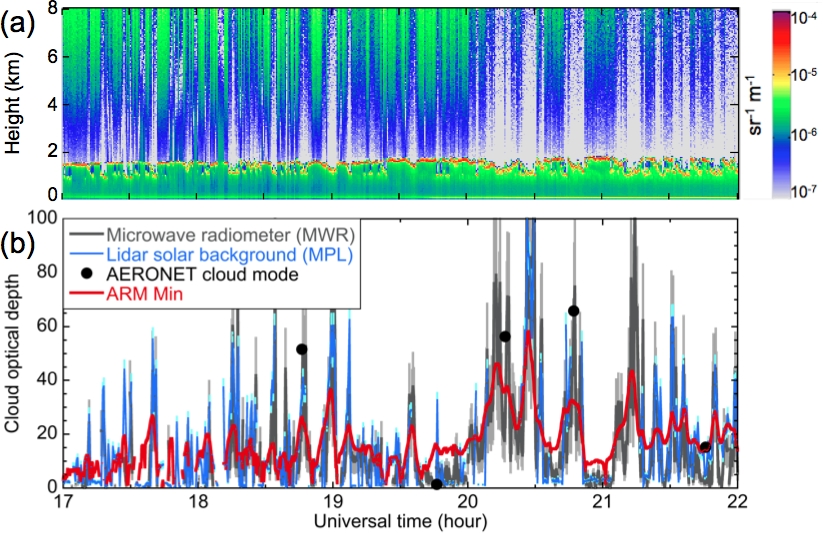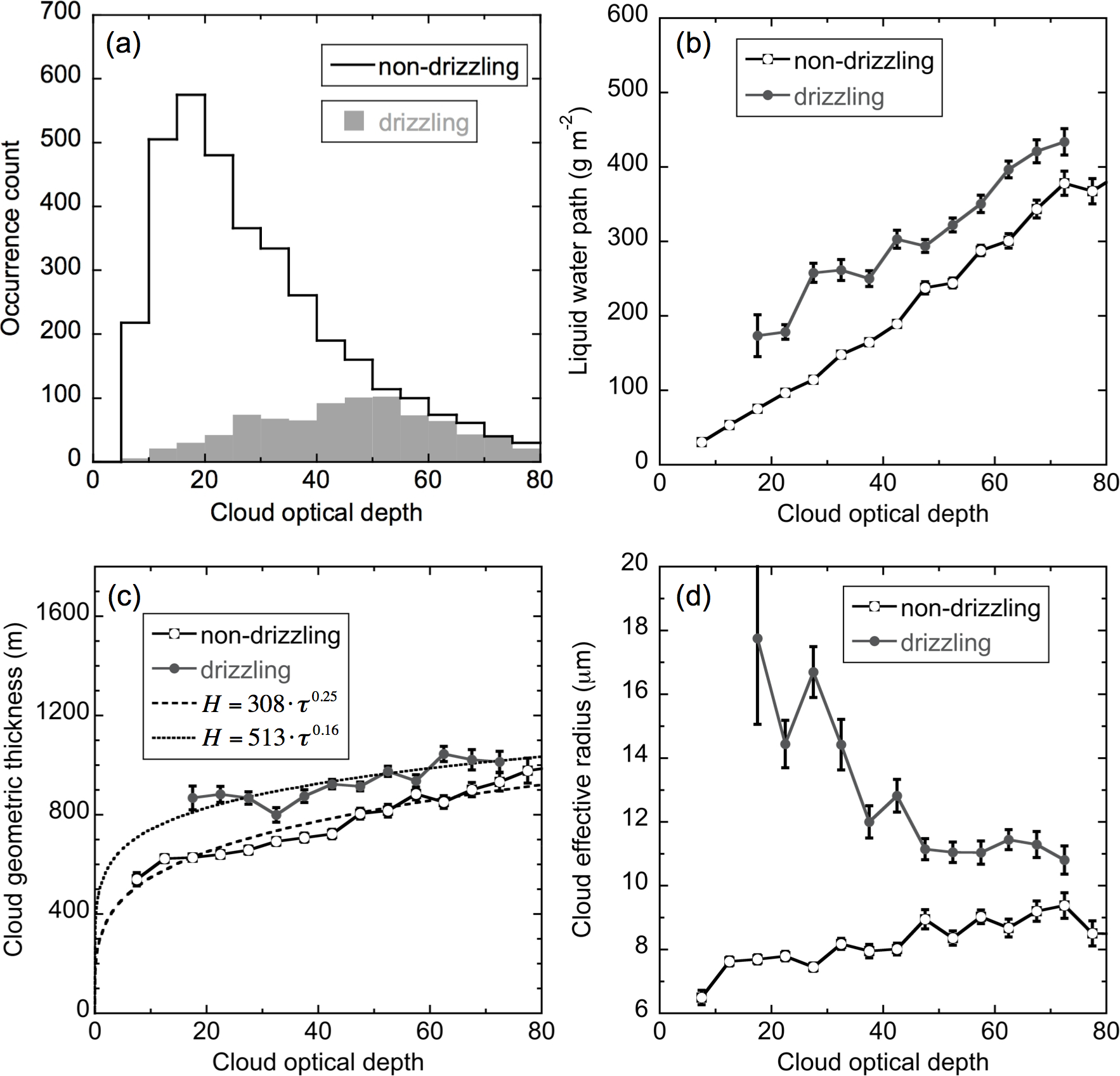Turn Trash Into Treasure: Continental Warm Cloud Properties Derived from Unexploited Solar Background Signals
Submitter:
Chiu, J.-Y. Christine — Colorado State University
Area of research:
Cloud Distributions/Characterizations
Journal Reference:
Science
Low-altitude boundary-layer clouds strongly influence global climate through their impact on Earth’s radiation and hydrological cycle. Therefore, long-term global measurements are crucial for providing direct observational constraints to improve our knowledge of cloud and precipitation formation, and to better represent these clouds in weather and climate models.
At the Atmospheric Radiation Measurement (ARM) Oklahoma site, low stratiform clouds have been investigated in a variety of studies, from short-period field campaigns along with airborne and/or spaceborne measurements to long-period climatologies. These studies concentrated on variations of liquid water path (LWP), cloud base height, cloud fraction, and cloud radiative forcing. Surprisingly, little attention is given to the interdependence between cloud macrophysical, microphysical, and optical properties, which are strongly linked to the stages of warm cloud and precipitation evolutions.
Impact
To enhance ground-based observations for studying the interdependence of cloud properties properly, a novel retrieval method is introduced that exploits the solar background signals previously treated as noises and removed in lidar measurements. Figure 1 demonstrates how this new method greatly extends lidar applications to optically thick stratiform clouds. The penetrated signal at 17:00 UTC and the completely attenuated signal at 20:30 UTC in Figure 1a indicates the presence of clear-sky and thick clouds, respectively. These indications of cloud presence in Figure 1a correspond well to optical depth retrievals in Figure 1b. For intermittent and broken cloud situations between 17:00 and 18:00 UTC, Figure 1b also shows that retrievals from calibrated lidar solar background light agree with those from other benchmarks.
Combining these new optical depth retrievals with radar and microwave observations at the ARM site during 2005–2007, Figure 2 shows that LWP and geometric thickness increase and follows a power-law relationship with cloud optical depth regardless of the presence of drizzle; LWP and geometric thickness in drizzling clouds can be generally 20–40 percent and at least 10 percent higher than those in non-drizzling clouds, respectively. In contrast, droplet effective radius shows a negative correlation with optical depth in drizzling clouds and a positive correlation in non-drizzling clouds, where, for large optical depths, it asymptotes to 10 μm. A threshold of 10 μm appears to be a good indicator to distinguish between non-drizzling and drizzling continental clouds, but it is lower than the threshold of 15 μm for marine clouds from satellite and aircraft observations.
Summary
This new method can be easily adapted to the exiting lidar networks, including the high-density ceilometer networks in the United Kingdom, France, and Germany that have been established for monitoring volcanic plumes. Combined with the ability of lidars to resolve vertical distributions of aerosol properties below cloud layers, collocated and simultaneous measurements of aerosol and cloud are also possible, which can help advance our understanding of aerosol–cloud interactions.



